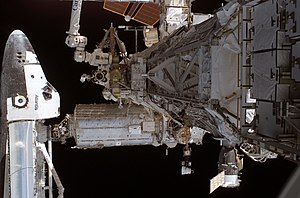I saw this tweet the other day:
http://twitter.com/#!/Bob_Richards/status/95670040791220224
It caught my attention because it’s a catchier version of a story I’ve been telling for several years now. My version goes like this:
No one could have predicted Facebook would be one of the most used features of the Internet 10 years ago, let alone when they were inventing the Internet.
Before Facebook it went like this:
Spreadsheets could not have been conceived of until the age of desktop computers. It took having a computer, a programming language, and an accounting background all coming together in the same place and person before the someone could even imagine the idea of a spreadsheet. And now, people buy Windows computers just so they can get Excel.
What does this have to do with the work of Mach 30? If you look around the space industry, patterns emerge. And one of those patterns is kind of the reverse of those stories. You see, every few years someone comes up with a new “reason” we have to invest in space access.
The “we” is almost always the government, and the reason is some predicted “killer app” – the space industry equivalent to Excel, or Facebook, or Angry Birds— that thing we just cannot live without. When I was a kid it was microgravity pharmaceutical research that would lead to the cure for cancer. Later it was space tourism (Take your family on the vacation of a lifetime!), which has come back around again with the sub-orbital market. Lately I’ve been reading a lot about space based solar power, the idea that we can solve the world’s energy crisis by putting up dozens of giant solar collectors to beam electricity down to Earth.
What do all of these ideas have in common? The only way you could ever build them (many commercial orbiting research stations, dozens of orbiting hotels, or giant solar power stations) is to first build the holy grail of human spaceflight: a reusable space plane that provides aircraft-like access to space. The thought is if one can convince policy makers that we need the killer app, then they will obviously fund the development of a fully reusable space plane because that is a necessary first step. And then the space community gets what it really wanted in the first place: the space plane.
But it’s all backwards from the way history works. If you think about it, this is the equivalent of someone in the 1960s saying, “I know, let’s put a computer in everyone’s pocket [smart phones] and on their desks [personal computers], and then tie them all together into a planet wide super network so we can write a program for college students [and later everyone] to keep up with what their friends are doing at any moment” as a justification for building the entire personal computing revolution and the internet. And don’t forget, this is a time when computers were somewhere between the size of small closets to entire rooms. Seriously, there was no way to predict Facebook back then, and even if you could, it would sound so crazy that no one would fund the work. The scale is too large, the reason too strange, and the payoff is too far away, if it will ever come.
Instead, researchers openly shared and collaborated on the development of improved and ever smaller computers, and on the infrastructure for what would become the internet. Later hobbyists developed an operating system, a web server, a database, a web oriented programming language, and much more, all open source. Only then, after decades of open development, was the market ready for a college kid to start Facebook and become a billionaire. If you look at the other examples, you’ll find a similar story. Truly revolutionary technology is evolved over time, and not for the reasons we eventually use it for.
This is the reason Mach 30 is organized as a research organization instead of an advocacy organization. For decades advocacy groups have lobbied the government and industry to support the dream of a spacefaring society by tantalizing decision makers with these potential killer apps. But it just has not worked, because it puts the process in reverse order. Instead, we want to provide the opportunity to turn space development around, and lead with passionate research and development, knowing that when the time, technology, and players are right, amazing businesses and markets will open up in space.
ad astra per civitatem – to the stars through community









